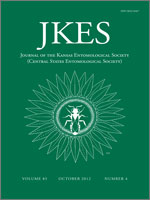Arthropod abundance was monitored in maize (Zea mays L.) crops on two farms located in western central Mexico during a single growing season. At the first farm (El Calvario, Michoacán), a no-tillage system was used in maize plots, while in the second farm (Singuio, Michoacán), a conventional tillage system was established. At these sites, sampling was conducted on nine occasions at seven day-intervals. Soil arthropods were captured using pitfall traps. At each sample point, maize plants were randomly selected and the number of arthropods observed on each plant was recorded. Poecilus mexicanus Chaudoir (Coleoptera: Carabidae) was the most abundant insect captured and comprised 75% (n = 2530) of the total capture of arthropods. Other carabid species together represented 18% of the total capture of arthropods at these sites and was significantly greater in the no-tillage farm compared to the conventional tillage farm. Staphylinids were the second most common group and were more abundant in the no-tillage than conventional tillage farm; Platydracus sp. Thomson (Coleoptera: Staphylinidae) was the most abundant staphylinid captured and was most abundant in the no-tillage farm. No differences between the abundance of the remaining arthropods were observed between the farms. The abundance of arthropods associated with maize plants on these two farms was not clearly affected by the type of cultivation. Over the course of the study, the abundance of fall armyworm larvae Spodoptera frugiperda J. E. Smith (Lepidoptera: Noctuidae) was very low (maximum 0.16 ± 0.02 insects/plot) on both farms; infestation by this pest did not differ significantly between farms. In conclusion, the no-tillage farm seemed to favor some beneficial predators present in/on the soil (e.g., carabids and staphylinids), possibly because these insects exhibit a preference for more diverse habitats and because they are more sensitive to the type and timing of cultivation practices.
How to translate text using browser tools
1 October 2012
Arthropod Abundance in Two Maize Fields in Western Central Mexico
S. Pineda,
G. Cruz,
J. Valle,
J. I. Figueroa De La Rosa,
J. M. Chavarrieta,
M. Ordoñez-Reséndiz,
A. M. Martínez
ACCESS THE FULL ARTICLE
beetles
cultivation practices
maize pest
natural enemies





